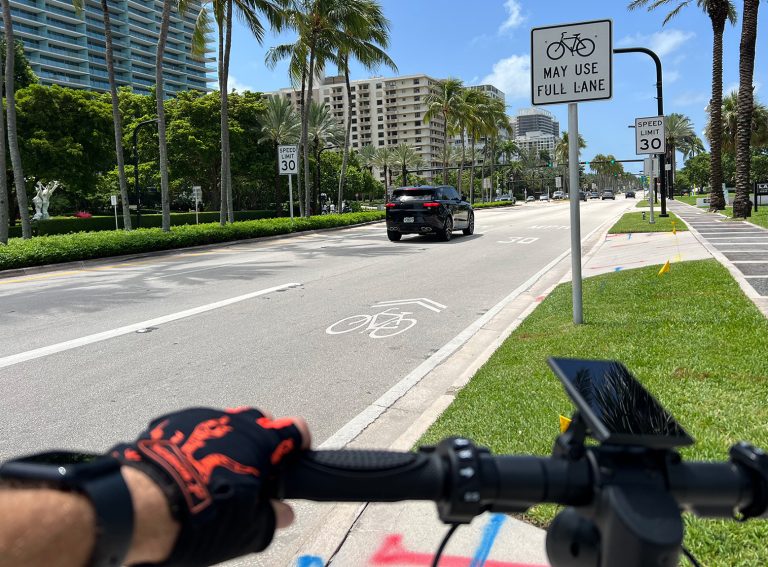Author: Ben Segal, Director of R&D at Superpedestrian
Defending pedestrians and the public realm from problem e-scooter riders is vital to allowing shared micromobility to flourish. But we first need to understand why riders behave the way they do – and that is no easy task.
On June 30th, Paris deputy mayor David Belliard announced that the French city was taking action to protect pedestrians from shared e-scooter companies. Multiple reports of injuries and fatalities caused by shared e-scooter riders in Paris and further afield have caused Belliard to take an increasingly hard line against the three shared e-scooter providers on his turf.
“Either the situation improves significantly and scooters find their place in public areas without causing problems, in particular for pedestrians, or we look at getting rid of them completely,” said Belliard, according to French broadcaster RFI.
Belliard is responsible for transportation in Paris. That includes the city’s 15,000 shared e-scooters, provided by three operators who were selected by competitive tender process in summer 2020. The competitive process should have provided Parisiennes with the best service of its kind, but problems are mounting just 12 months into the programme.
“Belliard said…he had received ‘much negative feedback about scooters on sidewalks, the sense of insecurity, and scooters abandoned in the streets’,” reported RFI.
Sidewalk riding deja vu
It’s not just Paris that is struggling with how to protect pedestrians. The North American city of Chicago found that “sidewalk riding and sidewalk clutter were the most serious problems” in a 2019 shared e-scooter trial.
This is despite all operators in Chicago promising novel solutions to combat the problem. The report states baldly: “On their pilot applications, scooter vendors committed to bringing sidewalk riding detection technology to demonstrate in the city. However, no vendors ultimately deployed this technology during the pilot.”
The report went on: “Among riders, 24 percent admitted to using the sidewalk at least some of the time, and five percent said they rode on the sidewalk at least half of the time.”
The problem that connects the two cities is the inherent technological limitations of conventional geofencing, the system of geolocation and command that all micromobility companies use to prevent scooters travelling into restricted areas. The Chicago report stated: “In the context of reducing sidewalk clutter and ensuring proper e-scooter parking, this technology is simply not accurate enough.”
Put another way: conventional geofencing, which relies on standard GPS, could not reliably detect whether riders were on sidewalks. And if you can’t detect it, you can’t prevent it.
Has the shared micromobility sector since solved the problem? Far from it. Industry publication Zag tested three brand new shared e-scooter fleets in the UK capital London in June 2021. The result? “All three suffer from problems caused by overzealous boundaries which diminish the riding experience. The issues are exacerbated by the inherent inaccuracy of GPS position – it can report you are up to 50 metres away from your actual position – or even more, if you are close to a tall building.”
If anything, the problem is accelerating, despite promises to address the issue from across the industry. As cities bounce back from COVID, streets are once again becoming filled with pedestrians – and e-scooter riders. While the bigger issue remains the way streets are designed to provide most space to motor vehicles – leaving pedestrians, cyclists, e-scooter riders and other forms of transport squeezed into the margins – this does not diminish the need to solve micromobility’s persistent problem.
To continue following today’s trajectory is to run the very real risk that the mode could be outlawed altogether.
Vision: micromobility’s silver bullet?
Many micromobility companies have been offering up novel solutions to solve dangerous e-scooter riding, including sidewalk riding, once and for all. One recent trend is towards computer vision – that is, mounting cameras to e-scooters to detect when a rider is on a sidewalk.
Initial reports show that the systems can work as intended in fine, dry weather, when visibility is good. The barnacle-like modules provide a warning beep to riders to indicate that something is amiss.
The reality, however, is that the problem of sidewalk riding and street clutter is far from solved. Why?
First, the systems being rolled out today by some operators do not prevent sidewalk riding. Some may cause the scooter to beep. Others may send a notification to a rider’s mobile phone after the ride. For e-scooter riders determined to continue riding at full power on sidewalks, these are not effective solutions.
Second, machine vision comes with significant technological drawbacks. It does not work well at night, for example, nor in adverse weather conditions. Camera lenses are easy to obscure or vandalise. And it does not cope well with changes in the environment, as evidenced by this recent example – in this case, the technology merely created an annoying user experience but the outcome could have been far worse in another location where safety was critical.
Third, real-time vehicle context (including precise positioning) remains the most fundamental element required to provide real-time interventions, such as shutting down a scooter ride. Machine vision can tell you what it sees, but not how the scooter is moving in real time. Without understanding exactly how the vehicle is moving, solving the entire array of dangerous riding remains out of reach.
Computing for the human factor
There is another element that vision systems do not address: human behaviour. As the appalling injury and fatality statistics of motor vehicles demonstrate, simply improving passive safety technology or police enforcement is not enough to prevent speeding, dangerous driving and fatal collisions.
Vision systems yield very little understanding about the behaviour of riders. Without understanding behaviour, developing new educational or technological tools to target improved riding becomes a guessing game.
Human behaviour is the next frontier in micromobility safety. Understanding how and where e-scooter riders behave in different situations will help us to begin to understand why they do so. It’s likely that, in many instances, dangerous riding outcomes could be solved by more targeted education or rethinking car-centred infrastructure.
Collecting this sort of data requires a far more fundamental approach than cameras, however. We need to be able to understand at a granular level the inputs that a rider is making, so that we can understand when swerving or heavy braking is aggressive riding or when it is defensive riding, and other similar factors. Only then can we begin to make informed decisions about education and enforcement.
To achieve this level of insight, we need an e-scooter system that:
- Pinpoints vehicle location with an accuracy far beyond traditional GPS
- Accounts for multiple physical parameters, including acceleration and braking forces and swerving
- Can be affordably scaled across entire global fleets
- Utilises machine learning to map macro trends
- Runs computations on the edge – that is, on the vehicle itself, in real time
Solving dangerous behaviours, such as sidewalk riding, requires a holistic approach. The first step is precise positioning. A robust, scalable system that tackles unsafe behaviours scientifically is the next.
Make no mistake – attempting to understand human behaviour when it comes to micromobility vehicles and systems is no easy task. For the sake of pedestrian safety in cities from London to Paris to Chicago, however, this work couldn’t be more vital.








